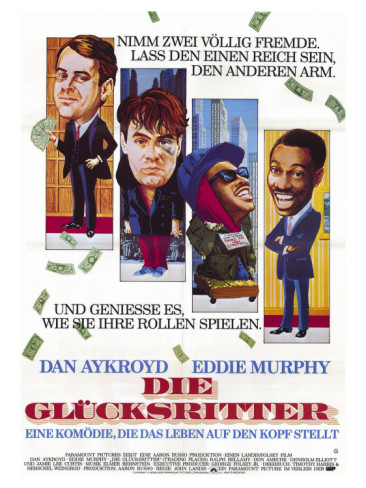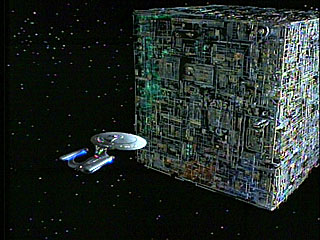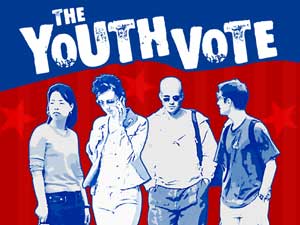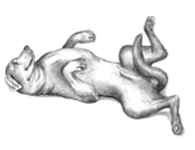Part II of the Proselytism Series
Religions aren’t products that are exported, and converts aren’t customers or consumers.
I think/hope that even the most jaded television evangelists and Billy Sunday style preachers would agree with me on this. I also assume that the self-selecting group of LE.org readers share my discomfort with the idea that a religious faith, any faith, is something that might be traded on the open market and exchanged like pork-belly futures or GM stock. Yes, there are times when some evangelicals and other members of missionary religions might talk in capitalist metaphors about “packaging” and “marketing,” but can’t we all agree that deep down these must remain metaphors and only metaphors?

Let me throw another term at you: “fungible.” Religion is not fungible. Dollars (though not dollar bills) are fungible, Euros are fungible, and yes, even pork-bellies are fungible! A fungible commodity is one in which any given unit of that commodity is for all practical purposes identical to any other. A dollar bill is worth the same dollar as a silver dollar, which is worth the same dollar as an electronic dollar that you directly deposit and use to pay your online cable bill. You never need to see the tangible object, and in most cases (coins excluded) the tangible object is merely a symbol of the fungible commodity. Hilariously, the movie Trading Places, staring Dan Akroyd and Eddie Murphy (1983) is based on the fact that pork belly traders have likely never been near a living hog! (Parenthetically, I have no idea why the early 1980s have become such a fertile source of illustrations for this blog in the last few weeks. Anyone with theories is welcome to proffer them.)
We’ll return to fungibility shortly. However, this blog is interactive, so once again I’m going to ask you to do something before reading any further. Follow this link and view the brief presentation on the growth of world religions. It’s very short and it is fascinating; so I’ll see you again in a minute or so.
OK, it wasn’t that cool. Yes, it is fascinating, but it is also a kind of subtle lie. It isn’t a vicious lie, but it can become one of we aren’t careful. The subtlety lies in the color-coding and the expansion and contraction of the uniformly colored fields over the centuries. The final frozen image of a largely blue world, however, leaves a false impression of uniformity and we should not be content to let that stand because as we now know, religions are not fungible commodities. The Christianity of an Argentinian Catholic is a very different thing from that of a Scandinavian Lutheran, which is very different from the Christianity of a Pentecostal in Seoul.
This is true of the world’s three major missionary traditions: Buddhism, Christianity and Islam, but it is also true of the smaller less missionary oriented traditions. My Christianity may carry the same label, as that of other Christians across the world, but it is not interchangeable i.e. it isn’t fungible. So the map presentation trades on a subtle lie that ignores huge cultural differences, but it also trades on a temporal lie that may be just as problematic. The blue color that represents Christianity and dots the Mediterranean around the year 100 A.D. is the same blue that covers North American at the end of the presentation, but this is not a true picture of the facts. Protestants may sing about the “Faith of our Fathers” but we know better. Let me but the truth more bluntly, a truth about which no one is more aware than practicing missionaries: religions are not transported or transferred, they are transformed!
Religion is not passed from hand to hand like a dollar bill or traded bank to bank like a fungible Dollar or Yen or Euro or Pound. And neither a convert nor a child raised in a tradition is a mere receiver and transporter of a dormant faith, a faith that they merely pass along unchanged.
Perhaps the most helpful analogue here is language. At one level it is true that Shakespeare and Chaucer and I all three speak English, but as thou knowest deep in thine own breast, tis also most true that we speakest tongues foreign one to the other. An ya bet that we also speak a bit differnt where I come from originally than y’all likely speak where yer at.
Imagine a map presentation of world languages akin to the one you just watched on world religions and you can see the larger point here. The languages themselves include countless dialects and these dialects often evolve into independent tongues. Be honest, how many of us really understand the phrase “four score and seven years ago”?

Proselytism often makes secular folks uncomfortable, and if the static image of religion as a fungible commodity is true, then they have a point. Those colors are a bit Borg-like in the way that they spread across the globe. But Liberal Evangelicals should be able to respect the dynamic aspects of religious evolution and embrace religious transformation as the living core of proselytism. This is the theme that I’ll pick up on in my next entry as I end this brief foray into a LiberalEvangelical take on missions in the 21st century.



